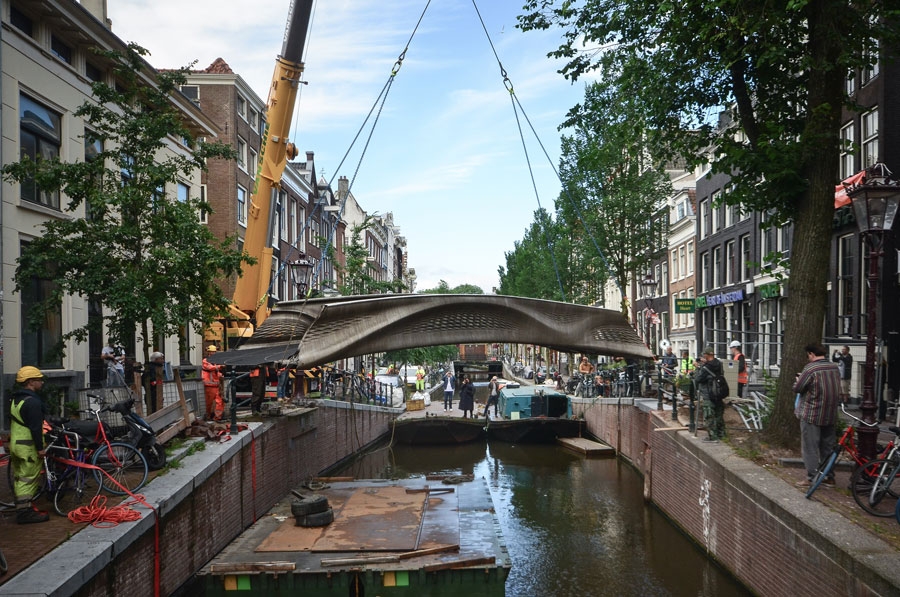Sensors measure health of first 3D-printed steel footbridge
Sensors installed on the ‘world’s first’ 3D-printed steel footbridge in Amsterdam, the Netherlands, are now measuring, monitoring and analysing the structure’s performance as it handles pedestrian traffic. The findings will help inform the future design of such printed structures.

Unveiled in Amsterdam this summer, the novel 12-metre-long structure will act as a ‘living laboratory’ enabling its co-developers, Dutch company MX3D and Imperial College London, UK, to assess 3D-printed steel’s long-term behaviour and performance.
Lead structural engineer, Arup, describes how MX3D has created software to transform welding machines into 3D printing robots to produce the steel bridge, with advanced parametric design modelling, creating several iterations until arriving at an optimal shape against a set of benchmarks. The resulting 'S' shape departs from the monolith U-bridge design. Joris Laarman Lab is the designer.
In the absence of structural design provisions for 3D-printed steel, physical testing and computer simulation have been important for ensuring safety. To enable this work, scientists at Imperial’s Steel Structures group carried out the underpinning research and validation, including testing destructive forces on printed elements and cross-sections, advanced digital twin computer simulations, non-destructive real-world testing on the footbridge, and an advanced sensor network to monitor the bridge’s behaviour over its life.
‘It is unusual in the construction sector to need to perform verification testing at a range of scales...For over four years we have been working from the micrometre scale, studying the printed microstructure up to the metre scale, with load testing on the completed bridge,’ explains Dr Craig Buchanan, Lecturer in Construction at Imperial. ‘This challenging work has been carried out in our testing laboratories at Imperial, and during the construction process on site in Amsterdam and Enschede, the Netherlands, on the actual printed bridge.
‘We have undertaken material testing on printed samples at Imperial to measure the stress-strain response and have squashed columns to understand how printed structural sections behave.
‘During the construction process, we performed non-destructive loading tests on the actual bridge at various stages to ensure that its behaviour matched that predicted by our modelling and to prove its load-carrying capacity,’ says Buchanan.
The Steel Structures group’s early research into metal 3D printing for the construction sector prompted MX3D to approach the team to participate in the project.
The group will be monitoring the footbridge’s public use in Amsterdam to gain a better understanding of how its structural response changes under wear and tear. They also want to see how the public interacts with 3D-printed structures.
Using an extensive network of installed sensors, the collected data will be transferred to its digital twin to monitor how the bridge performs in terms of managing load, strains, temperature and acceleration.
Buchanan says significant research still needs to be undertaken, but notes that 3D printing, coupled with digital twin technology, has the potential to accelerate infrastructure design, creating more efficient structures that reduce the environmental impact, material usage and manufacturing costs, while giving architects more freedom.
‘It has the potential to revolutionise the sector, through new structural forms, highly optimised elements and automated onsite construction,’ he says.







